Fisheries' Problems in the South China Sea
Fisheries' Problems in the South China Sea
BY Dr. Graham Blackmore
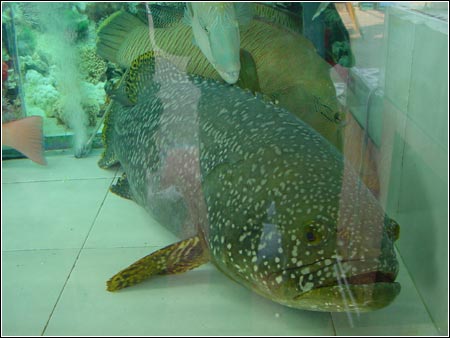
Even though not a great deal is known about them, it is still
beyond the scope of this essay to discuss all the fishing
activities prevalent in the South China Sea. This is a particularly
worrisome fact given that, even though a great deal more is known
about the fisheries of the North Atlantic, the Cod fishing industry
still managed to collapse. With this in mind, and because Hong Kong
highlights the regional situation, it is important to provide some
information about Hong Kong.
Hong Kong’s fishing fleet comprises some 4,500 fishing vessels, employing about 190,000 fishermen; in 1998, it produced 180,000 tons of fisheries products valued at U.S. $270 million. Not bad for a population of approximately 6.5 million and a coastal area of about 1000 square kilometers. But here is the snag: 90% of its catch came from outside of Hong Kong, that is, it mostly came from the South China Sea.
Two-thirds of Hong Kong’s fleet comprises local, inshore vessels, with only the remaining third being able to fish offshore waters with a range of approximately 650 kilometers (406 miles)...
The 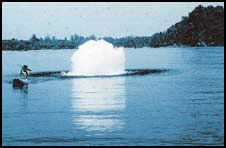 Chinese Government has a year-round ban on trawling
in its territorial waters down to a depth of 40 meters (132 feet),
and other areas have closed seasons for all fishing. Though this
may also sound good, hand-lining and gill-netting are largely
unrestricted, and inshore waters contain very few fish apart from
those that in most areas would be considered not worth the effort
of catching. In 1999 and 2000, fishing was banned in all of
China’s territorially claimed seas, including the South China
Sea, for June and July. This has affected some four million Chinese
(including Hong Kong) fishermen, and although the impact of this
action is unknown, it indicates clearly the extent to which
overfishing is perceived to be a problem in at least the
Chinese-controlled South China Sea.
Chinese Government has a year-round ban on trawling
in its territorial waters down to a depth of 40 meters (132 feet),
and other areas have closed seasons for all fishing. Though this
may also sound good, hand-lining and gill-netting are largely
unrestricted, and inshore waters contain very few fish apart from
those that in most areas would be considered not worth the effort
of catching. In 1999 and 2000, fishing was banned in all of
China’s territorially claimed seas, including the South China
Sea, for June and July. This has affected some four million Chinese
(including Hong Kong) fishermen, and although the impact of this
action is unknown, it indicates clearly the extent to which
overfishing is perceived to be a problem in at least the
Chinese-controlled South China Sea.
In an attempt to provide for voracious seafood appetites, Hong Kong has developed a mariculture industry occupying twenty-six fish culture zones with a sea area of 209 hectares and some 1,480 operators. Production in 1998 was only about 12,000 tons, which catered to about 5% of local demand for live marine fish. The aquaculture sector, including freshwater production, was 6,200 tons in 1998, valued at US $25 million, which accounts for 3% of the local catch by weight, but 8% of the value. This seems to be a good idea, and the industry is sustained by 30,000 tons of locally so-called “trash fish” caught by the local capture fisheries. These are chopped up and fed to the caged seabreams, groupers and snappers, so nothing is wasted. In reality, however, such “trash fish” are the fingerlings and juveniles of what would be commercially valuable species if they had ever reached maturity. Clearly something needs to change.
Perhaps the most worrisome fisheries problems facing the South
China Sea are the destructive practices of dynamite and cyanide
fishing. The problem of dynamite fishing is widespread throughout
Asia and the South China Sea, from Indonesia to southern China,
e.g., Hainan and Hong Kong.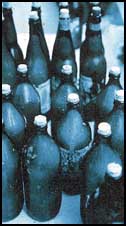 It typically occurs over coral reefs and, in some
places, such as in Indonesia, it has been a widespread and accepted
fishing technique for over fifty years. In fact, blast fishing is
not alone in rapidly destroying the coral reefs of Indonesia, but
so are poison (cyanide), coral mining, sedimentation (through
logging of rainforests) and over-fishing. The same problems of
mining (both offshore and inland), dynamite fishing, bottom
trawling, coral collection, and domestic, agricultural and
industrial pollution have contributed to the deterioration of coral
reefs in many other countries. Most recent research on dynamite
fishing has been carried out in the Philippines, and it has been
calculated that, following blast fishing in the Central Visayas, a
recovery time of at least thirty-eight years would be needed to
achieve ~50% coral cover. Furthermore, about 71% of Philippine
reefs are in poor to fair condition due to excessive siltation
caused by deforestation and the widespread use of sodium cyanide
and explosives by fishermen.
It typically occurs over coral reefs and, in some
places, such as in Indonesia, it has been a widespread and accepted
fishing technique for over fifty years. In fact, blast fishing is
not alone in rapidly destroying the coral reefs of Indonesia, but
so are poison (cyanide), coral mining, sedimentation (through
logging of rainforests) and over-fishing. The same problems of
mining (both offshore and inland), dynamite fishing, bottom
trawling, coral collection, and domestic, agricultural and
industrial pollution have contributed to the deterioration of coral
reefs in many other countries. Most recent research on dynamite
fishing has been carried out in the Philippines, and it has been
calculated that, following blast fishing in the Central Visayas, a
recovery time of at least thirty-eight years would be needed to
achieve ~50% coral cover. Furthermore, about 71% of Philippine
reefs are in poor to fair condition due to excessive siltation
caused by deforestation and the widespread use of sodium cyanide
and explosives by fishermen.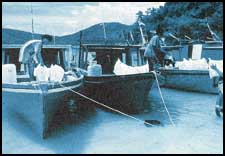
Similarly, the problem of cyanide
fishing has been identified as widespread throughout the Asian
region. Sodium cyanide (NaCN) has been in use by tropical marine
fish collectors in the Philippines since around 1962. Not
surprisingly, there is a high mortality of fish captured by sodium
cyanide squirted onto the reef, and delayed mortalities occur
throughout the chain of middlemen to the aquarium hobbyist. For the
unscrupulous suppliers this is good because the aquarium enthusiast
keeps returning to buy more fish.
Aquarium fish collection in the Philippines is a multi-million-dollar industry whose growth, however, has recently been interrupted by major slumps. These were attributed to the bad reputation of Philippine aquarium fish in the international market arising from the use of sodium cyanide in collecting them. In Bolinao, a major source of aquarium fish, the efficiency of collection using cyanide and economic incentive systems support its continued use in aquarium fishing. Fishermen are able to befriend law enforcers and/or avoid them so that the only method of effective control is to halt the supply of sodium cyanide.
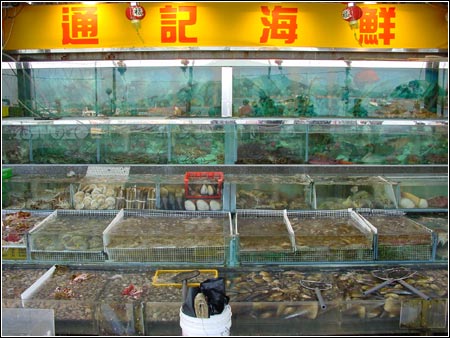 Originally developed for the aquarium trade, cyanide fishing
has grown into the live reef fish trade. Indeed it has been
reported that any live reef fish in captivity from the Indo-Pacific
region was most probably caught with some form of cyanide. Since
the 1960s, more than one million kilograms (2.2 million pounds) of
cyanide have been sprayed onto coral reefs in the Philippines to
stun and capture ornamental aquarium fish bound for the pet shops
and aquariums of Europe and North America and, more recently, the
live reef fish trade. The increasing demand for live reef fish as
seafood in Hong Kong and other major Asian cities has, in recent
years, greatly increased the incidence of this practice.
Originally developed for the aquarium trade, cyanide fishing
has grown into the live reef fish trade. Indeed it has been
reported that any live reef fish in captivity from the Indo-Pacific
region was most probably caught with some form of cyanide. Since
the 1960s, more than one million kilograms (2.2 million pounds) of
cyanide have been sprayed onto coral reefs in the Philippines to
stun and capture ornamental aquarium fish bound for the pet shops
and aquariums of Europe and North America and, more recently, the
live reef fish trade. The increasing demand for live reef fish as
seafood in Hong Kong and other major Asian cities has, in recent
years, greatly increased the incidence of this practice.
There is always a catch, and with cyanide fishing there is a big
one. While cyanide captures fish, it also kills the coral over
which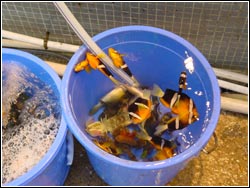 it is sprayed. Experiments have
been conducted with reef-building corals that seek to determine the
effects of a range of cyanide concentrations likely to be
experienced as a result of various cyanide-fishing practices.
Following the highest doses, corals died; after medium doses, they
lost their zooxanthellae, resulting in bleaching; and, lastly,
after the lowest doses, they lost their zooxanthellae, but not in
sufficient numbers to cause noticeable discoloration. Furthermore,
respiratory rates are inhibited by 10 to 90% following exposure to
cyanide, but these can recover to pre-exposure levels within a
short period after transfer to clean water.
it is sprayed. Experiments have
been conducted with reef-building corals that seek to determine the
effects of a range of cyanide concentrations likely to be
experienced as a result of various cyanide-fishing practices.
Following the highest doses, corals died; after medium doses, they
lost their zooxanthellae, resulting in bleaching; and, lastly,
after the lowest doses, they lost their zooxanthellae, but not in
sufficient numbers to cause noticeable discoloration. Furthermore,
respiratory rates are inhibited by 10 to 90% following exposure to
cyanide, but these can recover to pre-exposure levels within a
short period after transfer to clean water.
The annual retail value of the live reef fish trade in Southeast
Asia is estimated at U.S. $1.2 billion, U.S. $1 billion of which
consists of food fish.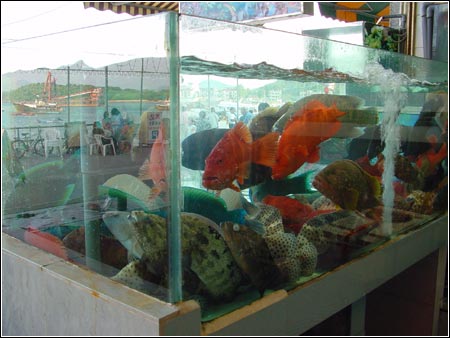
In 1995 it was conservatively estimated that some 20,000 to 25,000
tons of wild live reef fish, caught with the application of tons of
cyanide, were imported/exported in Asia annually. This estimate,
worryingly, did not include domestic trade, fish that did not
recover from the cyanide (that is, left dead in the sea) or did not
reach the market alive.
Hong Kong is the center for the live fish trade in Asia; in 1997, annual imports into this Special Administrative Region of China were estimated at 32,000 tons, of which 10 to 20% were re-exported to China. Local consumption here is estimated at 25,600 to 28,000 tons per year, this representing a value of U.S. $500 million. Other large markets include Taiwan and Singapore, importing 7,000 and 1,000 tons, respectively. In Hong Kong, only fish arriving by air have to be declared by importers, and since the majority of fish undoubtedly arrives by sea, the figures are probably gross underestimates. The scale of the problem is, therefore, poorly understood. It is clear, however, that it is huge. It is so profitable, moreover, that the industry is booming. Having destroyed the reefs in the South China Sea, fishermen, supported by business ventures, are moving further into the Western Pacific and are now commissioning fishing vessels capable of carrying 20 tons of live fish.
Cyanide fishing has been growing over the last three decades, and although other East Asian countries are involved, including Singapore, China, Taiwan and Japan, the major fishing fleet involved is Hong Kong’s with an estimated 60% of trade based there. Hong Kong’s live fish trade, with landings of 15,000 tons, is thus sustaining the use of cyanide not only in the South China Sea, but also southwards to Australia and eastwards into the Pacific Islands. Their targets are reef fish, notably, Grouper, especially Coral trout (Plectropomus leopardus) and Napoleon wrasse (Cheilinus undulatus), but, actually, anything that is worthwhile. The demand in Asia, especially Hong Kong and the fast-developing cities of southern China, appears insatiable and it is destroying the reefs of the Western Pacific.
There is no one correct answer or solution to the problems outlined above. For example, regulators may decide that a 30% reduction in catch is necessary to protect fish stocks. Certainly the fishermen paying hard currency, those fishermen who take ‘luxury’ fish for consumption in rich countries, will still get their share despite the reduction.
 Therefore, a 30% reduction in catch in fact translates to at least
a 30% reduction in food for the local population (the size of which
may already be determined by local fish catches). So what do we do?
Let 30% of the people starve? Obviously, this is not a good
solution. Sensible aquaculture may provide a partial solution, but
ultimately the problem lies in numbers, and this leads us to
controversial issues of birth control or at least re-education,
which may be ineffective given some religious beliefs. The problems
of destructive fishing are probably easier to solve, and while
education and legislation will play a part, ownership and detection
are more important.
Therefore, a 30% reduction in catch in fact translates to at least
a 30% reduction in food for the local population (the size of which
may already be determined by local fish catches). So what do we do?
Let 30% of the people starve? Obviously, this is not a good
solution. Sensible aquaculture may provide a partial solution, but
ultimately the problem lies in numbers, and this leads us to
controversial issues of birth control or at least re-education,
which may be ineffective given some religious beliefs. The problems
of destructive fishing are probably easier to solve, and while
education and legislation will play a part, ownership and detection
are more important.
How can ownership help? Most fishermen know the problems associated with blowing up the reef and even the most unaware and/or uneducated detect declining fish catches. The problem lies in the fact that the sea generally belongs to everybody and, therefore, there is no benefit to Bob looking after his favorite patch of reef if Tom can come along and (initially) catch more fish by bombing or cyanide. This leads to the perspective of: “If he can do it then so will I.” If ownership is assigned, each owner has a vested interest in an area of reef and, therefore, is more likely to look after it and make sure that nobody is destructively fishing within it, thereby destroying livelihoods. This scheme has the added benefit that it is self-policing. Detection can work at the other end of the scale, i.e., at the consumer level. With a cyanide detection system, and simple legislation, a large majority of the cyanide fishing could be stopped. Scientists are currently working on a simple system to detect cyanide. Once done, port authorities (in particular, in the live fish trade centers of Hong Kong, Singapore and Taiwan) will need to test all arriving fish and, without payment or punishment, confiscate the fish taken with cyanide. Without payment there would be no incentive to fish in this manner.
So what can you do? My guess is that most of the readers of DirQuest are living in a western nation, so they may think that there is nothing that they can do. Wrong. In 2001, the biggest market for cyanide-caught aquarium fish was the U.S. Collectors of aquarium fish in the U.S. can start to help by demanding cyanide-free fish. Ultimately, however, finding workable marine conservation measures requires more than idealized goals and benign intentions. A realistic and detailed understanding of ecological conditions, social circumstances and human motivation is needed. Scientists can tell you what is happening and can provide solutions to problems (this is why politicians do not like scientists), but implementation is tied to the political arena. Ironically, then, what marine conservation needs is politicians, and since politicians only care about votes, in the end, the fate of marine conservation is in the hands of the voting public.
Copyright ©2002 Global
Underwater Explorers.
All rights reserved.

